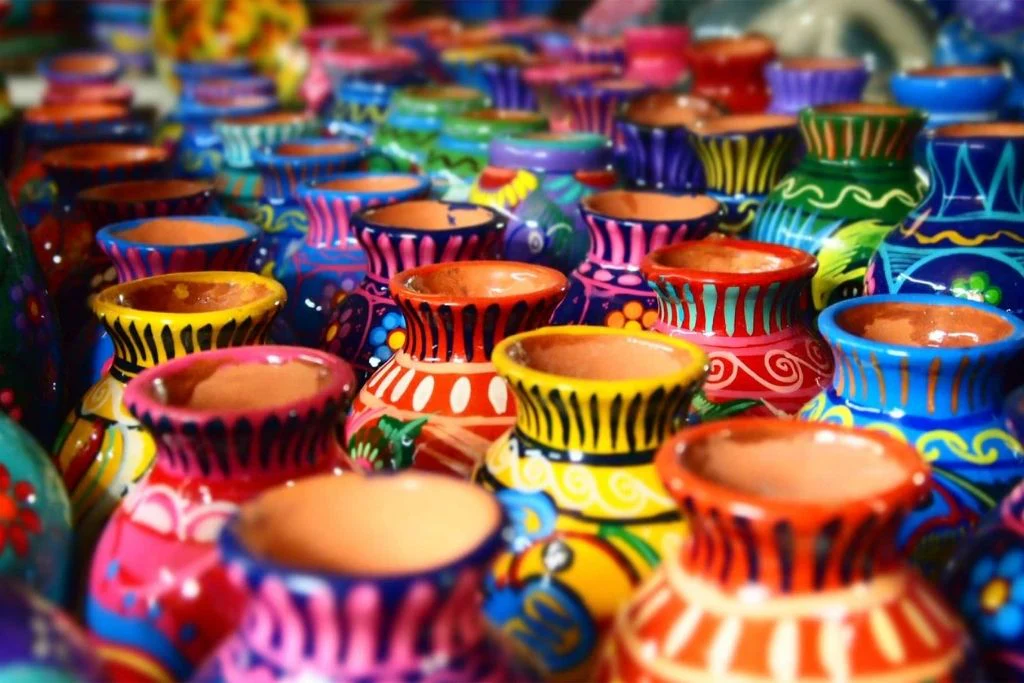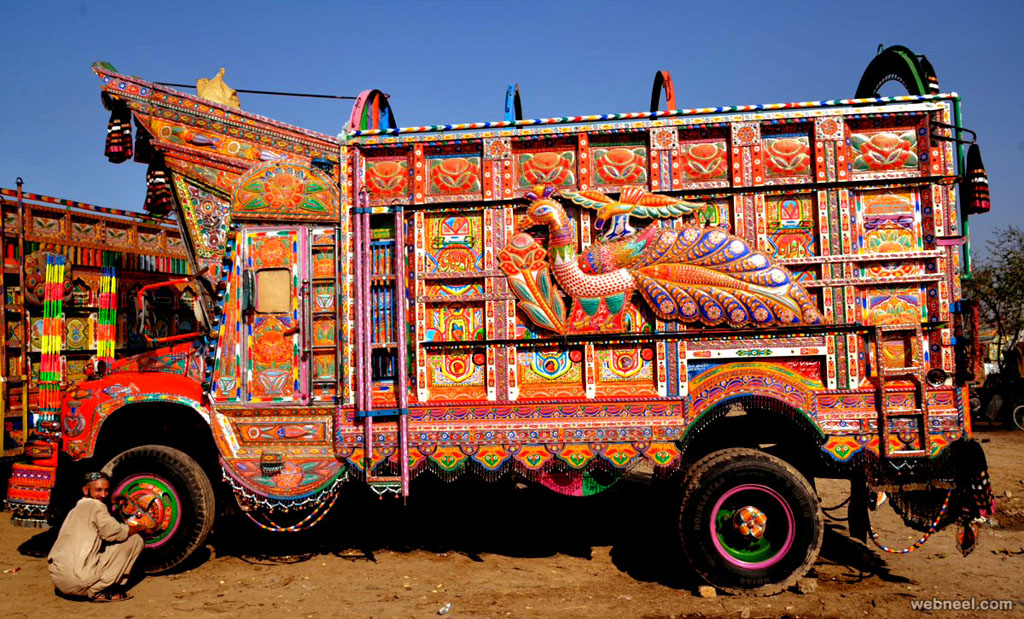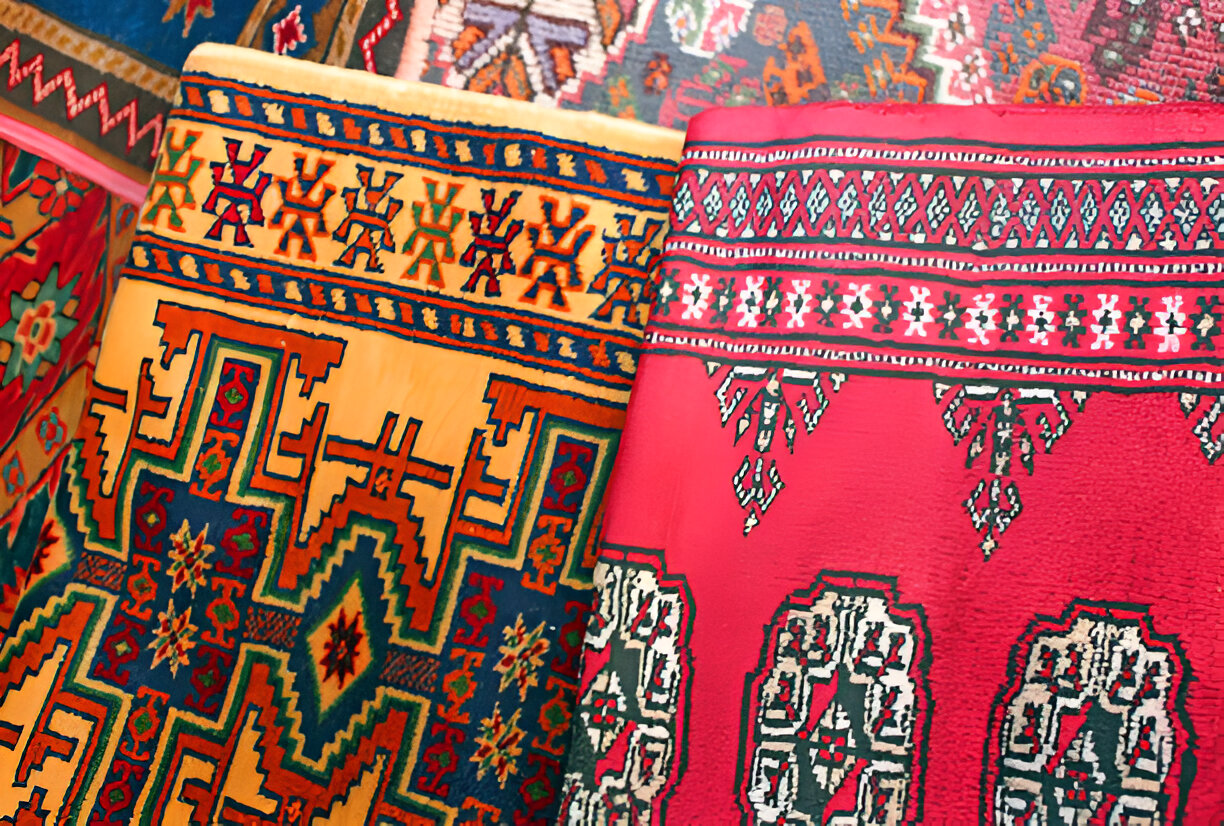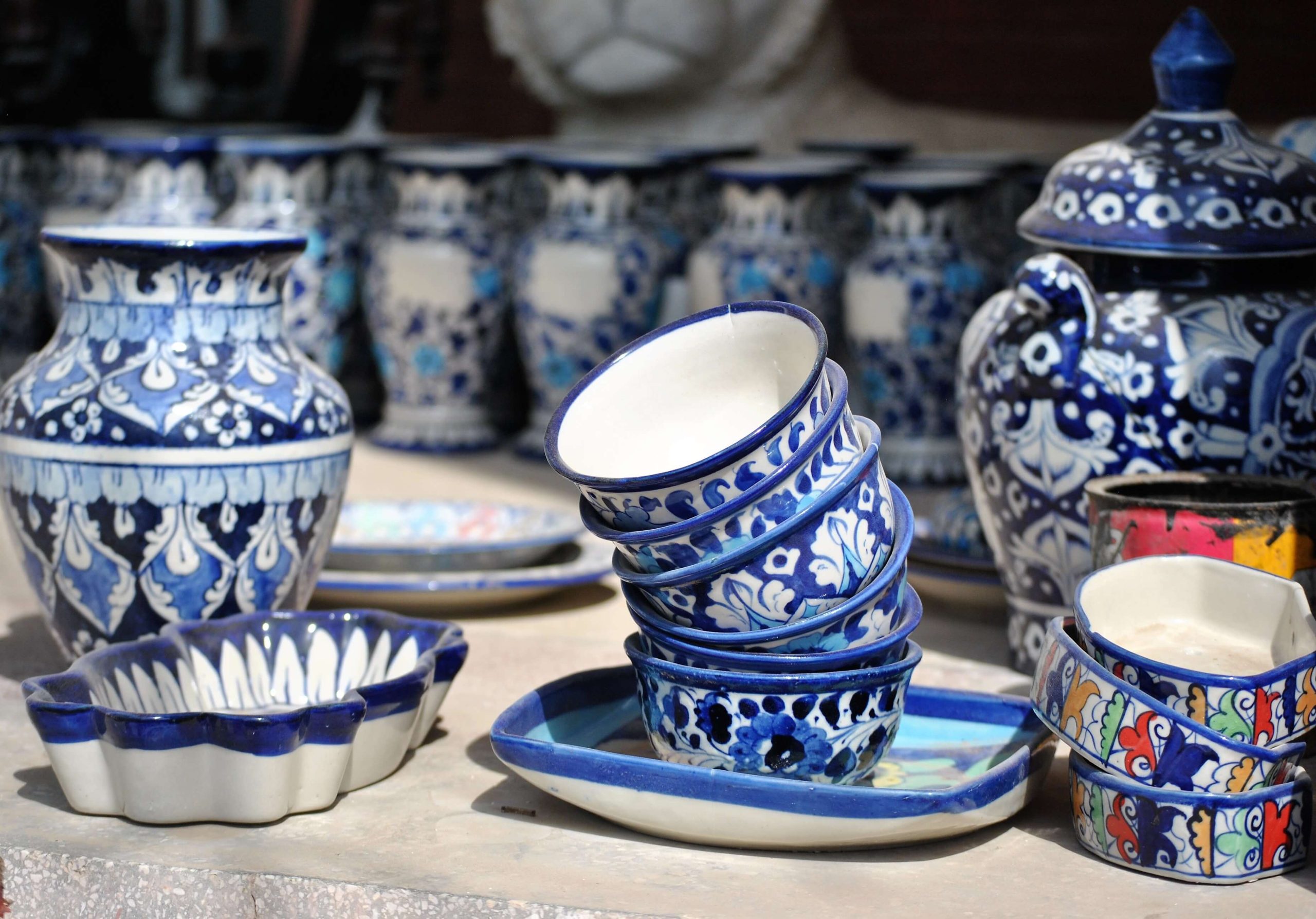
Pakistan is a land of rich heritage, vibrant culture, and centuries-old traditions, reflected beautifully in its crafts and handicrafts. From intricate embroidery to detailed woodwork, these crafts not only represent Pakistan’s artistic excellence but also support the livelihoods of thousands of artisans across the country. Preserving these crafts is essential to maintain cultural identity and empower local communities.
Table of Contents
Toggle1. Truck Art: A Moving Canvas of Culture
Truck art is one of Pakistan’s most iconic art forms. Known for its vibrant colors, elaborate floral patterns, calligraphy, and portraits, it transforms everyday vehicles into moving masterpieces. This unique art form is deeply rooted in Pakistani culture, symbolizing pride and individuality. Today, truck art is gaining global recognition, appearing on everything from home décor to fashion accessories.

2. Handwoven Carpets and Rugs
Pakistan is famous for its hand-knotted carpets, particularly from regions like Lahore, Karachi, and Multan. Using natural dyes and intricate Persian and Mughal-inspired patterns, these carpets are prized worldwide for their quality and craftsmanship. Carpet weaving is often passed down through generations, making it a significant part of Pakistan’s cultural heritage.

3. Blue Pottery of Multan
Multan, the “City of Saints,” is also known for its striking blue pottery, a craft believed to have originated from Persia. The pottery is characterized by cobalt blue floral and geometric designs on a white background. Each piece is handmade and painted, reflecting the artistic finesse of local artisans.

4. Ajrak Printing of Sindh
Ajrak is a centuries-old block-printing technique native to Sindh. The deep crimson, indigo, and black patterns symbolize tradition, pride, and cultural identity. Ajrak is commonly worn as shawls or turbans and is also used in home décor. This craft is a source of empowerment for women artisans in rural Sindh.
5. Embroidery Traditions Across Regions
- Phulkari (Punjab): Colorful floral embroidery traditionally used in dupattas and shawls.
- Sindhi Embroidery: Famous for mirror work and geometric motifs.
- Balochi Embroidery: Distinct with its intricate patterns and use of vibrant colors.
- Chitrali and Kalash Embroidery: Inspired by nature and local traditions, adding a unique cultural flavor.
6. Woodwork and Furniture Design
Chiniot, a historic city in Punjab, is famous for its exquisite hand-carved wooden furniture. The craftsmanship reflects Mughal influences and is considered a symbol of luxury and elegance.
7. Jewelry Making and Metalwork
Traditional jewelry like kundan, meenakari, and silver ornaments highlight Pakistan’s mastery of metalwork. These crafts are often tied to weddings, festivals, and regional traditions, showcasing the country’s diversity.
Why Preserving Pakistani Handicrafts Matters
These crafts are more than just art — they are stories of communities, traditions, and heritage. Supporting local artisans by promoting and buying their work ensures economic stability, cultural pride, and the survival of skills that have been refined over centuries.
Conclusion
Pakistan’s crafts and handicrafts are a reflection of its soul, combining history, artistry, and tradition. By valuing and promoting these creations, we can safeguard our cultural identity while empowering future generations of artisans.
